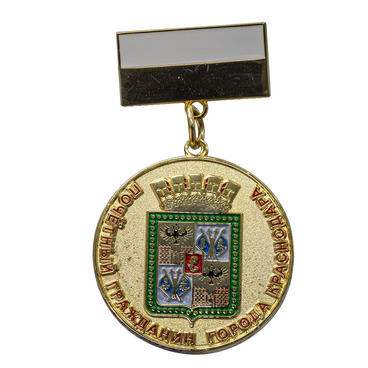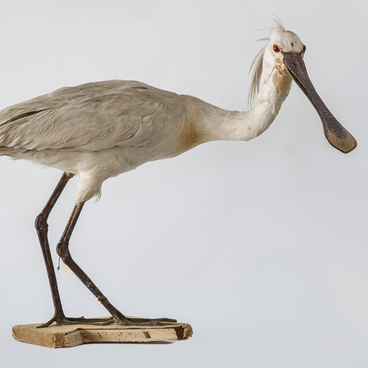The altar cross is an attribute of Orthodox services. It is kept in the middle of the altar, on the Holy Table — a special consecrated table for the communion — along with the Gospel, which symbolizes the invisible presence of Christ. Usually, this cross is used at the end of the liturgy and during some church sacraments, such as wedding, baptism, confession, and anointing of the sick.
The priest blesses the parishioners with the altar cross, and the latter are supposed to kiss the relic. In addition, these crosses are used to consecrate water on the Epiphany Day and in the rite of blessing the water on other days.
Altar crosses usually have an elongated handle, which is used to hold the cross during the ceremony. The upper part has the shape of a trefoil, which in Christianity symbolizes the Holy Trinity: the Father, the Son, and the Holy Spirit.
The cross from the collection of the Felitsyn Museum dates back to the first half of the 20th century. The exact place of its creation and the name of the manufacturer remain unknown.
During the Great Patriotic War, a great number of churches that had been closed for years started to reopen. In the 1920s, the Soviet authorities had used church buildings to accommodate various secular clubs or warehouses; sacred vessels and church objects had been seized and destroyed. There were not enough crosses, chalices, and other items necessary for the church service, so they were often made at home from the available materials. Probably, the cross from the museum collection was made in the same way.
The exhibit is made of white metal with nickel coating. It is hollow inside. At the ends of the cross are flat oval metal medallions with colored enamel images of the saints. There is a carved openwork metal circle in the central part.
In the center of the cross is a decorative metal cross coated with white enamel. A curve is visible on the handle of the lower part of the cross: perhaps, it made it more convenient for the priest to hold the object during the service.
This cross was found in 1982 in a windbreak by a sixth-grader Dmitry Shulzhenko. The church relic was wrapped in paper, but since it had been in the ground for a long time, it had been damaged: the metal had been oxidized, the decorative enamel had crumbled, one screw had been lost.
The priest blesses the parishioners with the altar cross, and the latter are supposed to kiss the relic. In addition, these crosses are used to consecrate water on the Epiphany Day and in the rite of blessing the water on other days.
Altar crosses usually have an elongated handle, which is used to hold the cross during the ceremony. The upper part has the shape of a trefoil, which in Christianity symbolizes the Holy Trinity: the Father, the Son, and the Holy Spirit.
The cross from the collection of the Felitsyn Museum dates back to the first half of the 20th century. The exact place of its creation and the name of the manufacturer remain unknown.
During the Great Patriotic War, a great number of churches that had been closed for years started to reopen. In the 1920s, the Soviet authorities had used church buildings to accommodate various secular clubs or warehouses; sacred vessels and church objects had been seized and destroyed. There were not enough crosses, chalices, and other items necessary for the church service, so they were often made at home from the available materials. Probably, the cross from the museum collection was made in the same way.
The exhibit is made of white metal with nickel coating. It is hollow inside. At the ends of the cross are flat oval metal medallions with colored enamel images of the saints. There is a carved openwork metal circle in the central part.
In the center of the cross is a decorative metal cross coated with white enamel. A curve is visible on the handle of the lower part of the cross: perhaps, it made it more convenient for the priest to hold the object during the service.
This cross was found in 1982 in a windbreak by a sixth-grader Dmitry Shulzhenko. The church relic was wrapped in paper, but since it had been in the ground for a long time, it had been damaged: the metal had been oxidized, the decorative enamel had crumbled, one screw had been lost.



